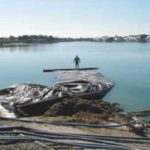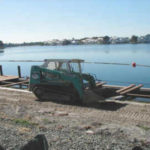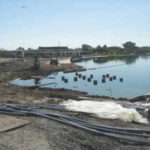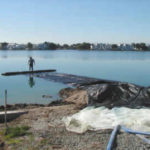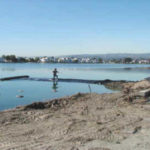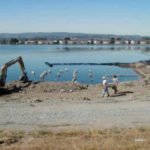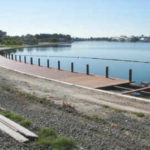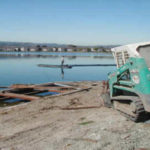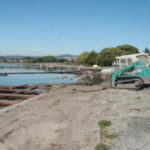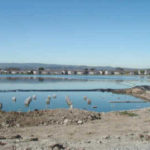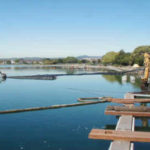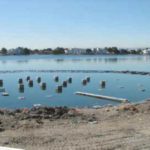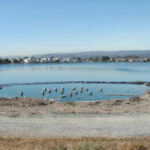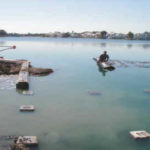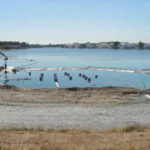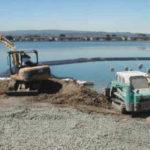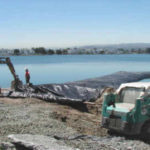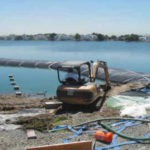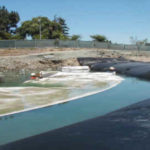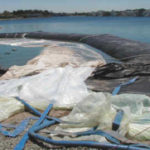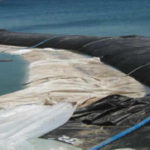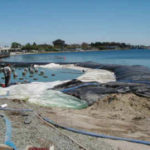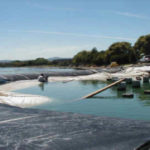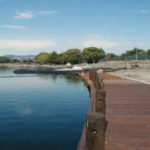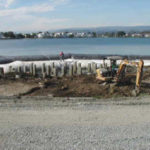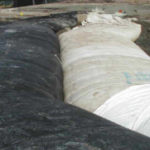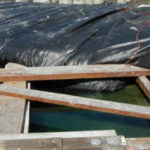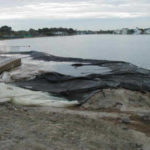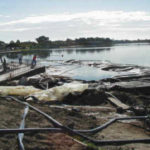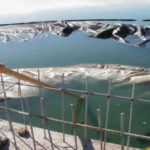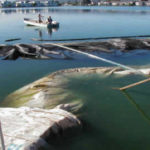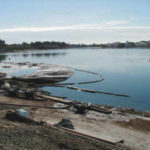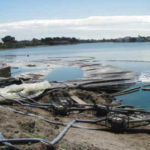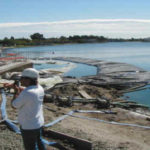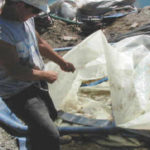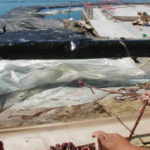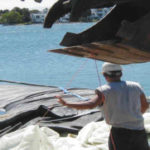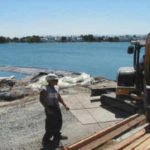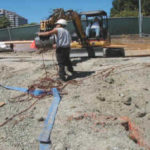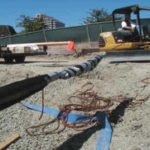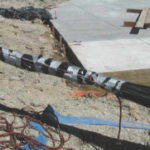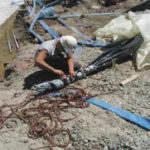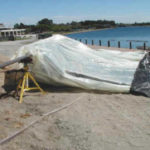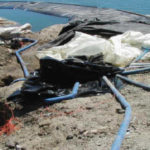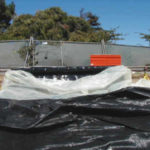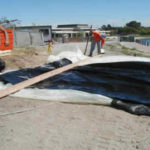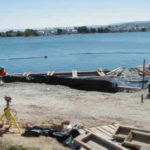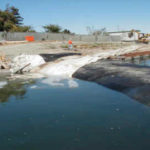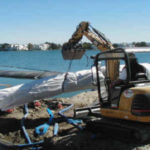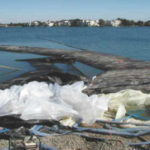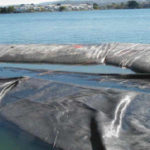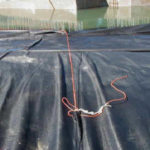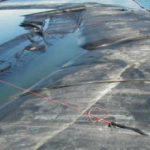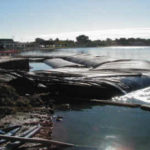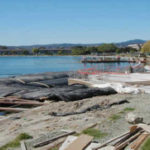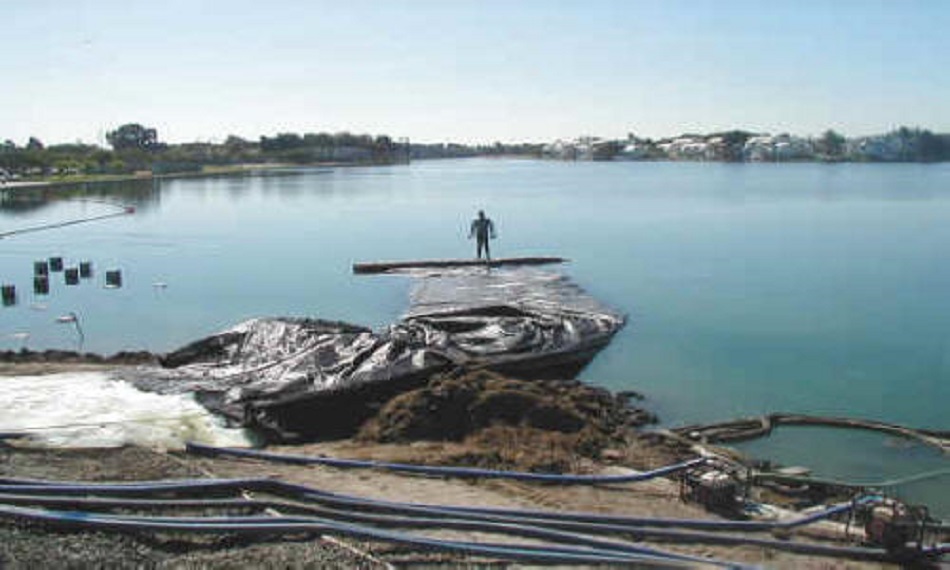
Since this was not a moving water application, only one restraining rope was necessary. The pumps were turned on, and the AquaDam was allowed to unroll freely. One end of the rope was attached to the loader, and the other was attached to the opposite end of the AquaDam.
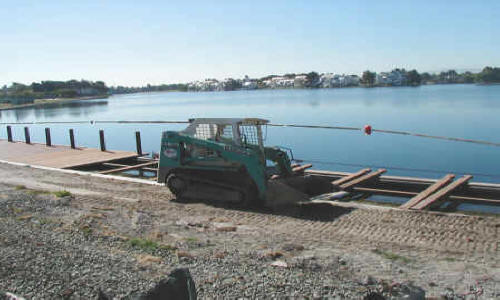
Since this was not a moving water application, only one restraining rope was necessary. The pumps were turned on, and the AquaDam was allowed to unroll freely. One end of the rope was attached to the loader, and the other was attached to the opposite end of the AquaDam.
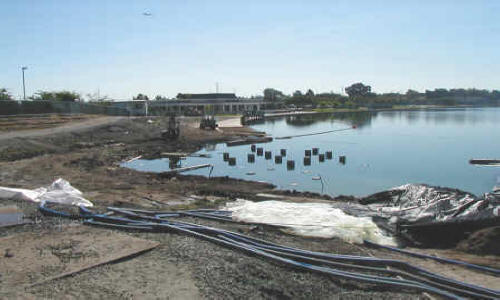
An overview of the work area. The loader is positioned across the work area from the AquaDam.
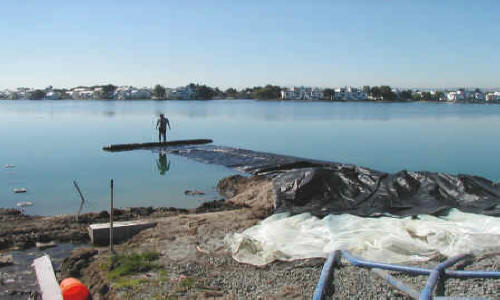
Once the AquaDam was unrolled far enough out into the lake, the loader was able to pull on the rope and turn it.
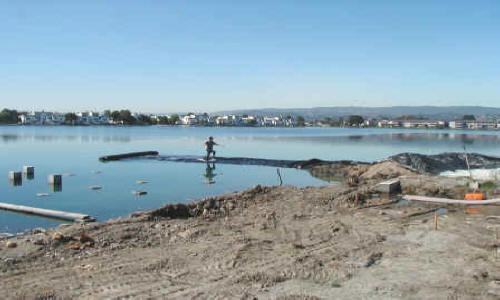
When partially inflated, an AquaDam will support a person's weight. However, since this AquaDam was not yet solid, the worker had to run quickly across the top to prevent from sinking.
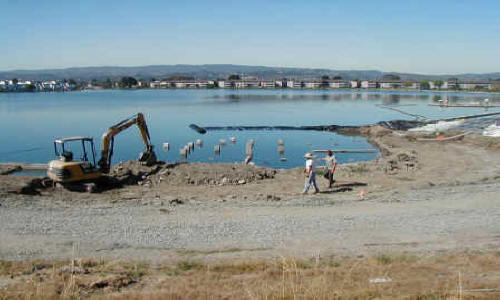
While the AquaDam was being inflated, the other bank was built up with on-site fill material. This gave the unrolling AquaDam something to abut into.
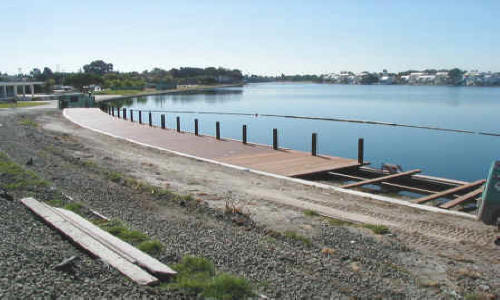
A picture of the new boardwalk. It was constructed of imported Brazilian Ironwood.
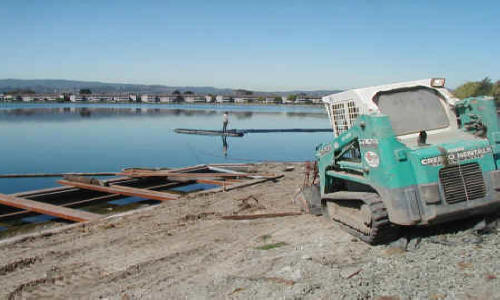
As the AquaDam continued to fill, the loader pulled the unrolling end farther and farther back. Every few pulls, the rope changed position and had to be slackened and then repositioned.
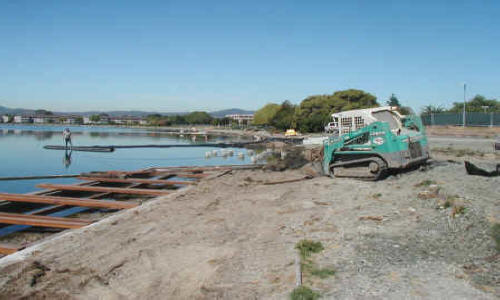
Due to the confined area that the loader had to move in, the operator had to repeatedly pull the AquaDam backwards, drive forward again to slacken the rope, and then retie to give himself more room.
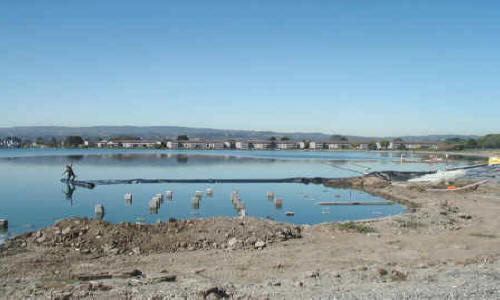
The laborer standing on the AquaDam did his part by manually unrolling it with his feet. When doing this, one must be careful not to fall into the water.
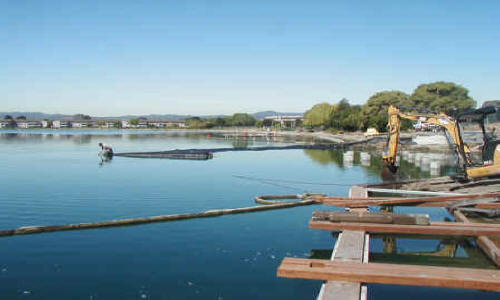
The rope also had to be readjusted repeatedly. The idea is to pull only on the far end of the AquaDam, forcing it to turn.
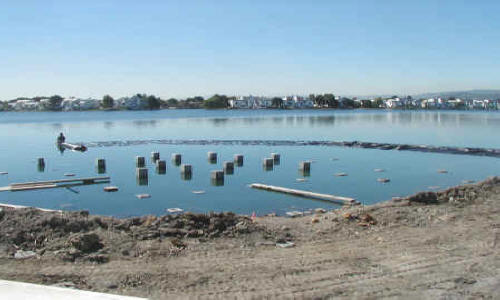
AquaDam
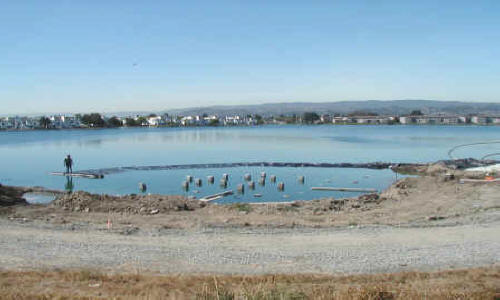
The AquaDam continued to unroll until...
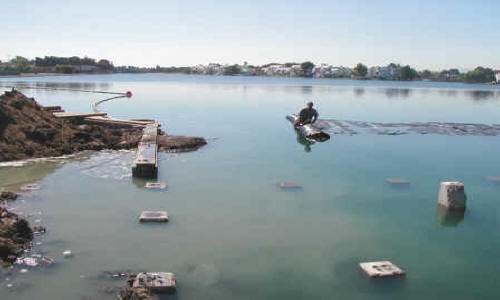
AquaDam
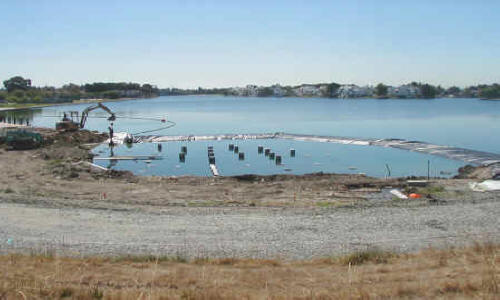
...it finally abuts into the bank.
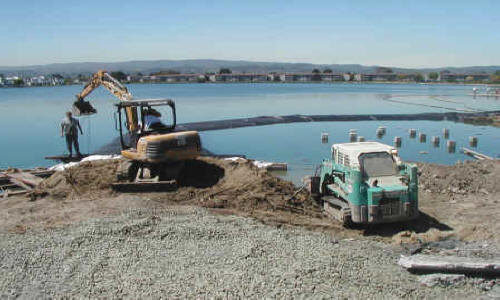
The end of the boardwalk had a small concrete support underneath it. The excavator was tied onto one end of the board�that the AquaDam� was rolled around, and the loader was attached to the other end. In this manner they were able to evenly pull the AquaDam up and over the berm.
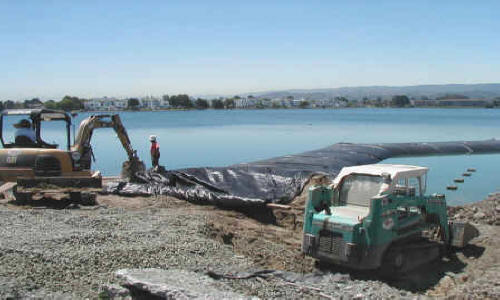
Excess fill material was placed on either side of the end of the AquaDam to help hold it in place.
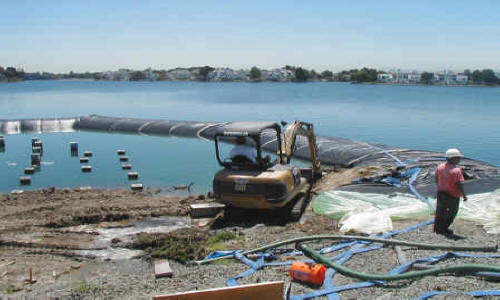
As the AquaDam was filling, the fill tubes began to creep down the berm, so they were tied off and water was pumped directly into them to help secure them.
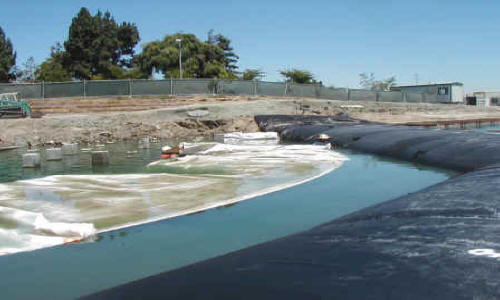
Once the 8' high AquaDam was inflated, pumping into it was stopped. A 5' x 100' AquaDam is completely unrolled and pushed against the 8' AquaDam by hand. Note that the water is 6' deep; laborers must swim the AquaDam into position.
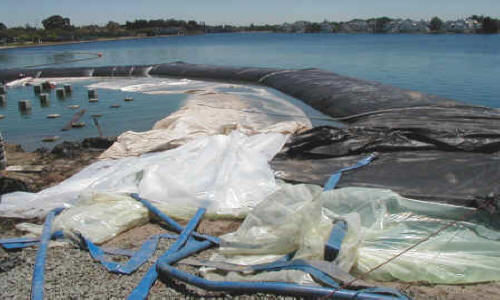
It was imperative that the 5' high AquaDam was placed snugly against the larger dam. In fact, it is best if there is excess material between them. This forces the 5' high AquaDam against the larger dam to "shore it up".
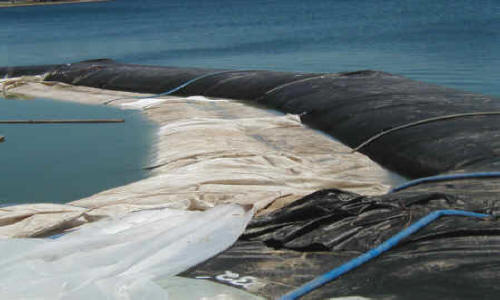
Once in position, the 5' high AquaDam was tied off to the larger one, and filling began in the smaller dam.
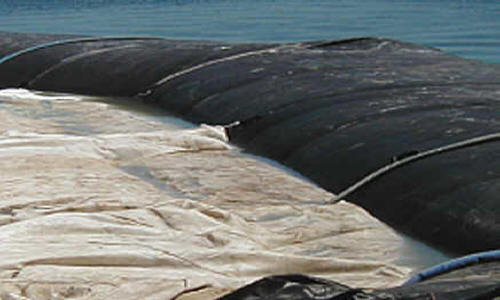
The 8' high AquaDam had strips of woven material sewn into the seams specifically so that things could be attached. This picture shows a closer shot of the tie point.
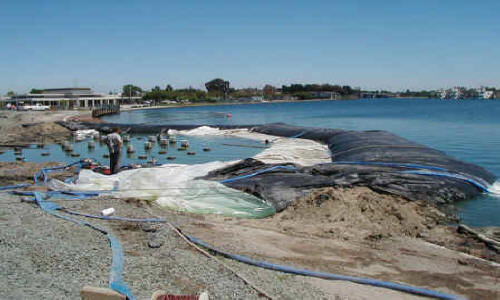
Both AquaDams were filling nicely.
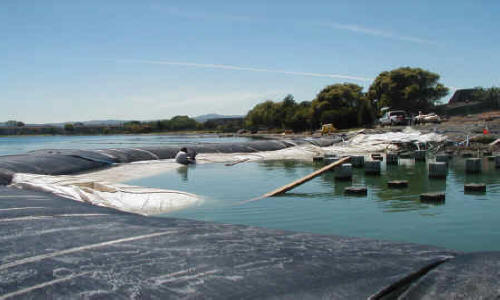
The 5' high AquaDam was firm enough to sit on.
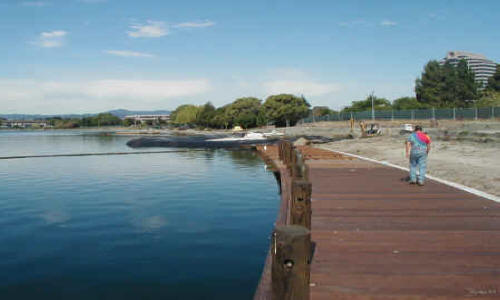
A side view of the job site. Notice the height of the 8' high AquaDam
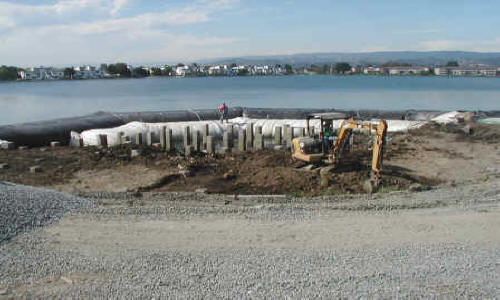
After the AquaDams were completely inflated, dewatering was accomplished. In this picture the site was almost completely dewatered.
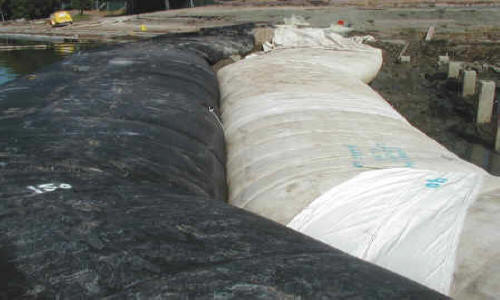
As the AquaDams inflated, they became more rounded, and eventually the tie ropes had to be cut (but only after the AquaDam could support themselves!). Notice that there is virtually no space between the AquaDams. This is due to the extra slack left between them.
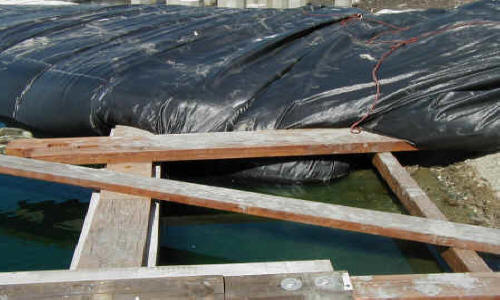
The 8' high AquaDam had to span this gap in the boardwalk, but due to it's flexibility it simply conformed to the fissure. There was virtually no leakage from this point or at any other point around the dewatered area
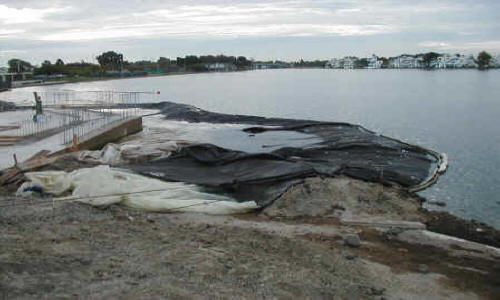
Unfortunately, since the submersible pump used for dewatering was so heavy, it had to be lowered down the side of the AquaDam. After 6 weeks of repetitive scraping, a small leak developed over a 3 day holiday weekend, and nobody checked on it. This eventually led to the failure of both dams.
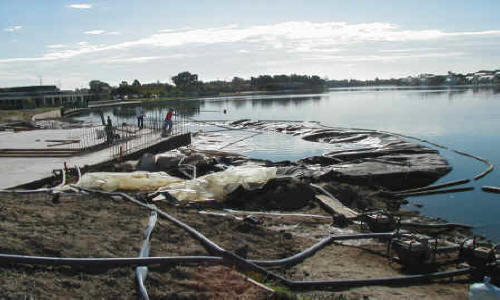
Aqua Dam, Inc. was notified of the failure of the AquaDams, and since construction was not complete, steps were immediately taken to correct the problem. First, the AquaDams had to be repositioned because they had moved into the work area.
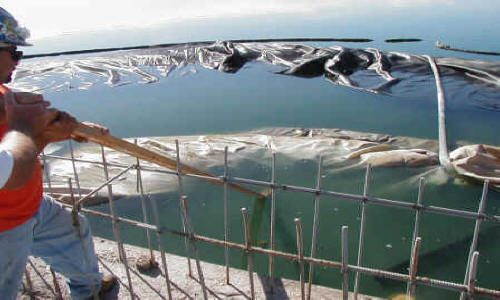
A worker pushing on the AquaDams with a 2" x 4".
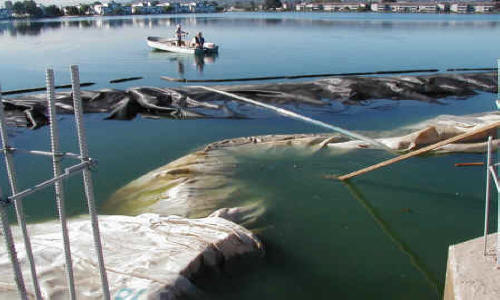
The straps on the large AquaDam were tied to this boat and were used to pull it back in place.
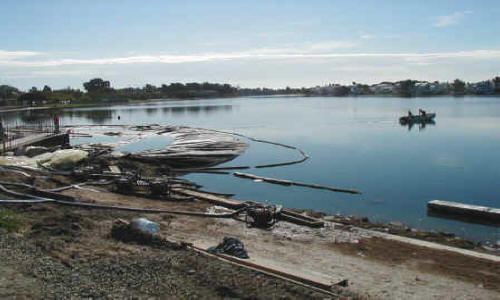
Pumps were also used to move the AquaDams. As water was pumped into the work area, the water level rose, and the difference in water pressure pushed the AquaDams back out and away form the work area.
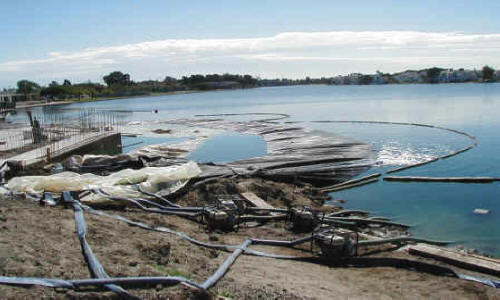
Once the AquaDams were back in position, the water levels had to be evened out again so that the dam would stay in place
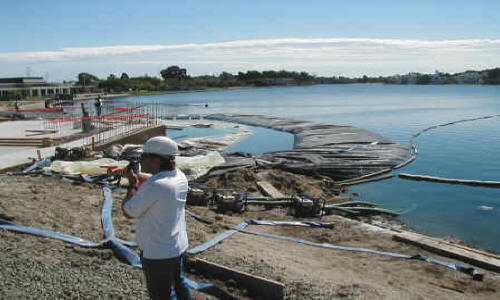
Water was then pumped back into the large AquaDam to help hold it in place and to prevent the new inner tube from hanging up on its way through.
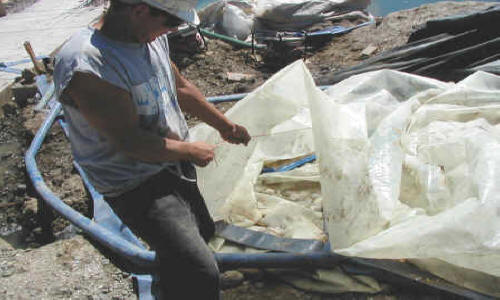
Every large AquaDam� has a string line running through each inner tube for just such occasions. The string line is not strong enough to pull the new liner through; it is only used to thread a piece of rope through the AquaDam
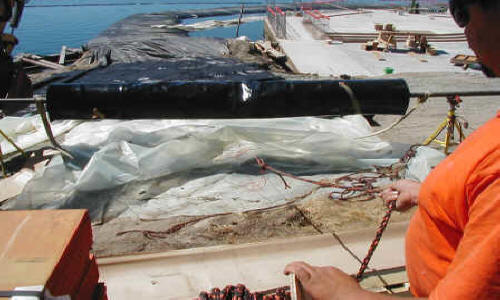
On the far end of the AquaDam, the roll of new inner plastic has been set up on rollers. Once the rope has been pulled through with the string line, the end of this roll will be tied onto the rope. You can see the piece of rope being pulled through the AquaDam
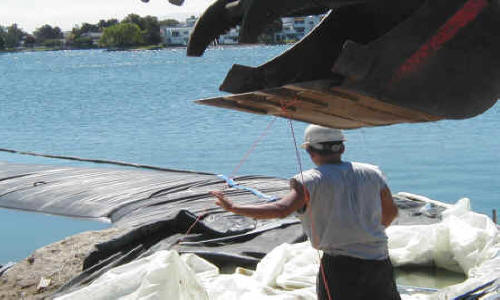
The string line is gently pulled until the rope can be grabbed. Then the end of the new plastic roll is tied on and pulled carefully through.
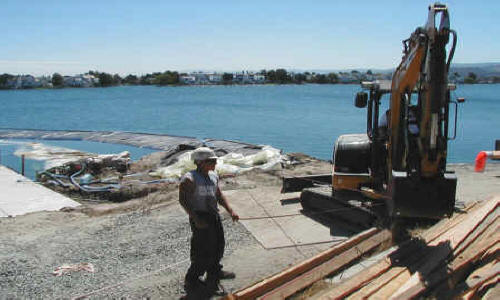
In this instance, there was very little room to maneuver, so the rope could only be pulled about 20' before it had to be retied.
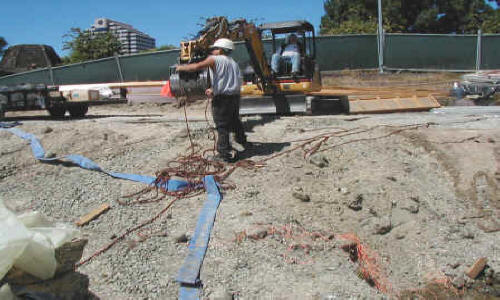
Pull, take up the slack, retie... Pull, take up the slack, retie...
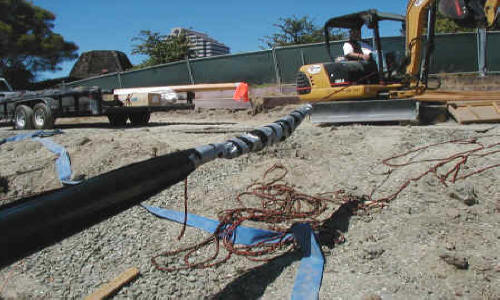
The rope is pulled until the end of the new plastic fill tube extends well out from the AquaDam
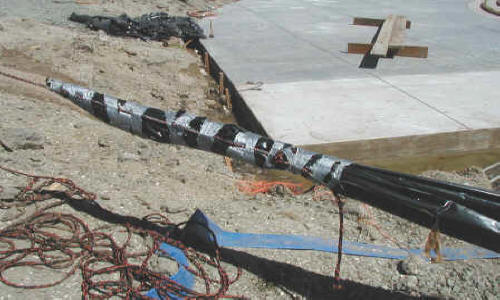
The new inner tube has been tied tightly and duct-taped in place. If the rope slips off the end of this tube while it is being pulled through the AquaDam, there is no way to finish the relining process, and there is also no longer a string line inside.
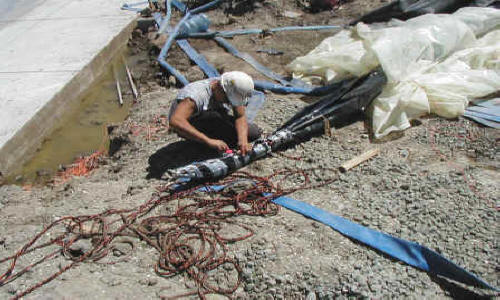
If this happens, the AquaDam would then have to be completely removed from the water to repair it. Once the new inner tube is through, remove the rope and duct tape and begin filling as normal.
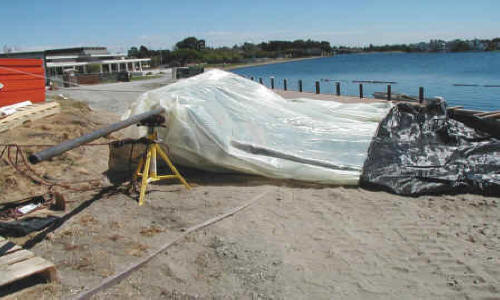
It is also very important that the roll of new plastic comes off the roll smoothly and evenly. If it falls, it may get holes in it, causing further delays. Pulling the rope slowly and easily is the best way to ensure success.
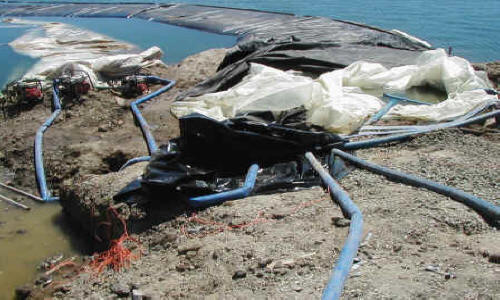
The new inner tube should be filled just like the original.
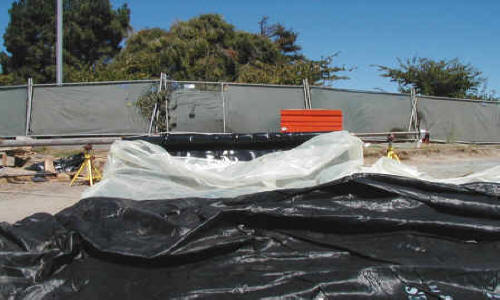
Any excess plastic material should be either cut off or unrolled. In this case, there was so little material left that it was unrolled and folded over.
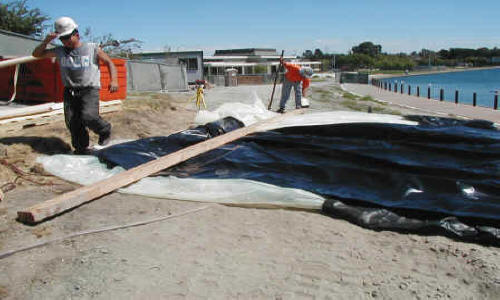
The excess plastic will now be rolled up in the end of the AquaDam as it is re-rolled. The original 4" x 6" beam that the dam came rolled on is used for this purpose.
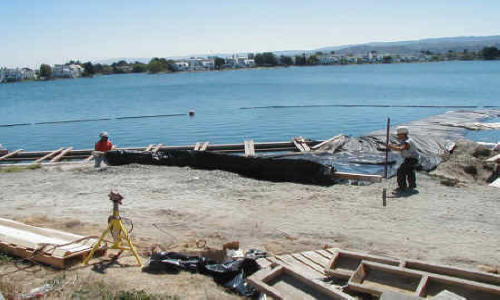
The end of the AquaDam is rolled up until it is out of the way.
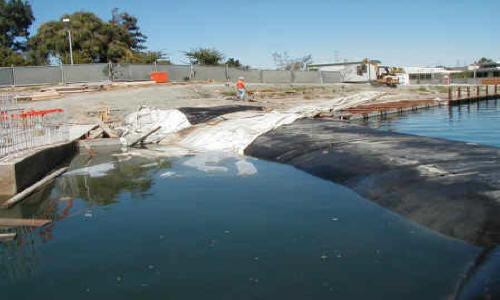
A replacement had been brought to take its place, so the 5' AquaDam was simply removed.
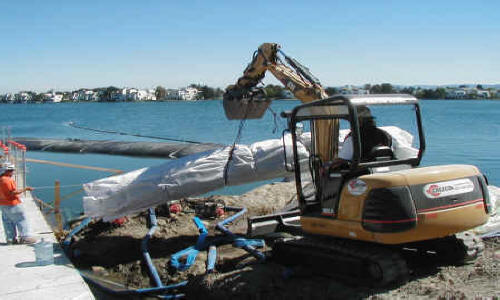
The new backup AquaDam is moved into position.
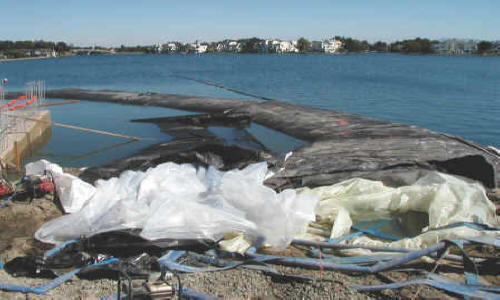
The new backup AquaDam is 6' high, and about 20' longer than the original 5' high dam.

The dam is allowed to unroll at its own pace as it is filled. The only thing that needs to be seen to is that it closely abuts the larger AquaDam
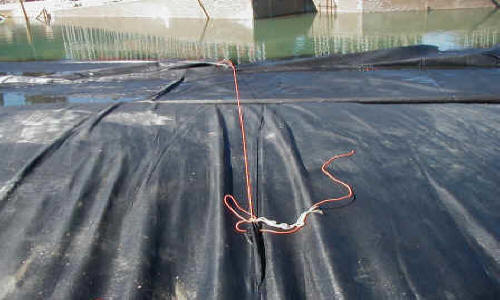
The 6' AquaDam is tied to the the straps on the larger dam to ensure a tight fit.
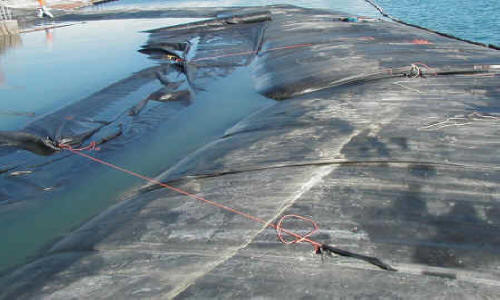
The end is kept propped against the larger AquaDam to ensure that there is extra slack to fill in any gaps between the dams.
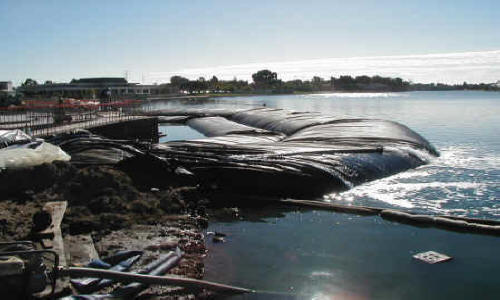
The dams continue to fill.
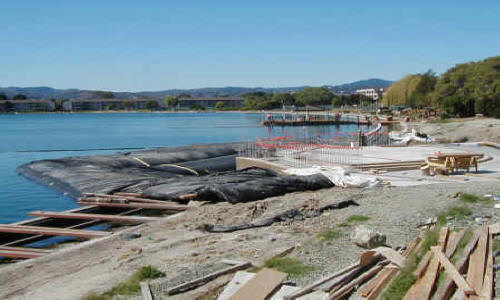
This AquaDam has now been completely repaired, without ever having left the water!
